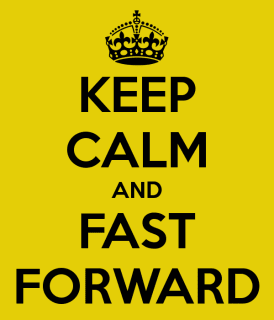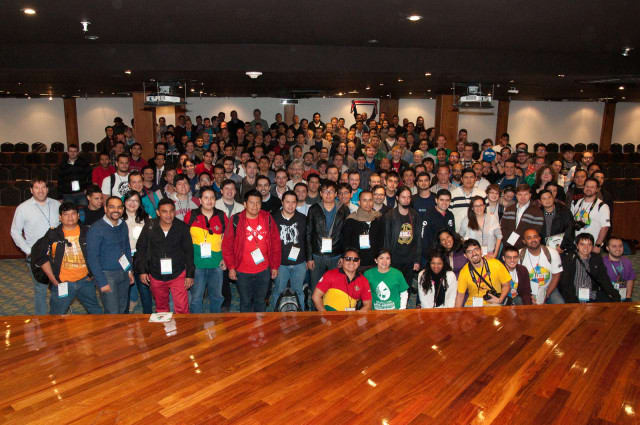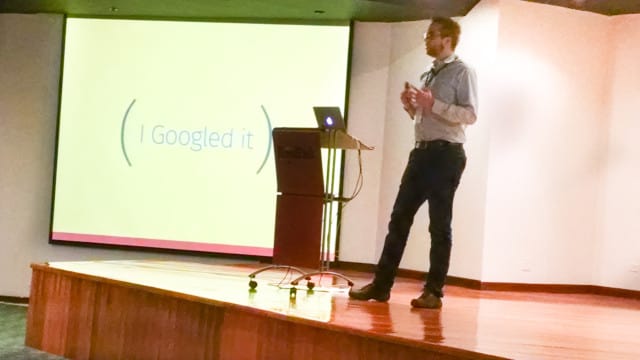The short version:
X-Team: “We’re considering sending you to Colombia to attend DrupalCon Latin America. We know you live in Europe. We know it’s on the other side of the world. And we know DrupalCon Barcelona (in your own country) is in six months, but we’re sending you anyway. Are you in?”
Me: “What?”
For a guy that has worked his whole life as freelancer, joining a big team was totally new fish for me, and attending a conference with all expenses paid was out of my expectations, so please forgive me if my first response was the not-too-clever “What?”.
I mean, am I really going to the other side of the world? Is this real?
Lucky me, it’s easy to find accommodation in Bogotá, as European citizens don’t need a visa, the language is not a problem and Google Maps has all the answers.
Keep calm and press fast-forward
I’m at Bogotá.
I’m going to repeat that, for myself, to help me believe it. I’m at Bogotá.
And it’s a mess.
Take a big European city and… Nah, wrong example. I can’t compare Bogotá to anything I know. But I can tell you this: It’s huge. It’s a noisy, super-accelerated, super-charged, 200 heartbeats-per-minute mess and everybody but me seems to manage perfectly well.
And the most shocking thing: Colombians talk slowly, clearly and quietly. They’re kind and polite. The city moves at a fast-forward speed the whole day and they keep calm.
DrupalCon Latin America Day 1
Welcome everybody, meet the Drupalers:
Yes, this one was a small DrupalCon with around 200-300 participants. Not the kind of huge massive show the US DrupalCons are, but it included the usual Drupal trademarked friendly atmosphere, participants from all over the world and a relaxing, positive mood.
Despite the size of this event, the Drupal Association didn’t come short on ammo: Dries himself, Angela Byron, alias webchick, Larry Garfield (crell). Mailchimp, Acquia and Pantheon among the sponsors.
And, of course, Dries gave the opening speech and keynote.
Pull & Push. Dries keynote speech.
Drupal 8 is the most ambitious release to date, for many different reasons. Some of them are well-known: a complete rewrite in Symfony and the new templating engine are probably the two main reasons everybody in the community knows about. And they are important, as they have a huge impact on the developer community, but these are “mechanical” reasons, so to say. They refer to how the engine works, but what’s the purpose of this engine?
That was what Dries wanted to explain. He tried to explain why Drupal 8 needed such a dramatic change.
For most of its short history, the web has lived into what Dries calls “The Pull Paradigm”. This is the conventional web; you want some content, so you search for it, or access to it, or use your browser’s bookmarks to get it. Whatever the method, in the end you’re going for the information. This is the “Pull Paradigm”, and Drupal 7 has worked well on it.
But the Pull Paradigm is being replaced by the exact opposite, what Dries calls “The Push Paradigm”. The information comes effortlessly to our devices. Facebook and Twitter notifications are an example of this Push paradigm, which is becoming more and more popular, but this is just the beginning. We see more examples every day.
That’s the most important message in the conference, a very important one: Drupal has adopted technologies and concepts from other projects — Symfony, YAML, Twig, Backbone.js, etc. — not because they are the next big thing. Drupal 8 brought those projects into it to stay relevant for this new web that is coming. Drupal 8 started years ago with the purpose of being ready for the future. It all came at a price, requiring a huge effort and taking much more time to release than expected, but it was necessary, not for the web that we have made until today, but for the web that we will be making tomorrow.
Now, what is the role for Drupal in this new paradigm?
There’s something that this new paradigm doesn’t change: content is still king. So the main purpose was, according to this idea, empower content creators.
Besides the many UX improvements Drupal 8 includes for content creators, it is also ready from the core to serve this content the very way it’s needed. In this new multidevice, multiplatform web, you have to be able to serve the information in whatever format is required. Drupal 8 is ready to serve full HTML pages, asynchronous chunks of data with no styling info, communicate both ways with different web services, serve headless content, send JSON or XML on demand… in sum: play nice with whatever is on the other end of the line.
So we’ll be able to deliver content to apps, external services, smart devices… We’re communicating with software outside Drupal?
Yes. And this is the key point of Larry Garfield’s presentation. But you’ll have to wait for Part 2 of my trip to DrupalCon Latin America.




